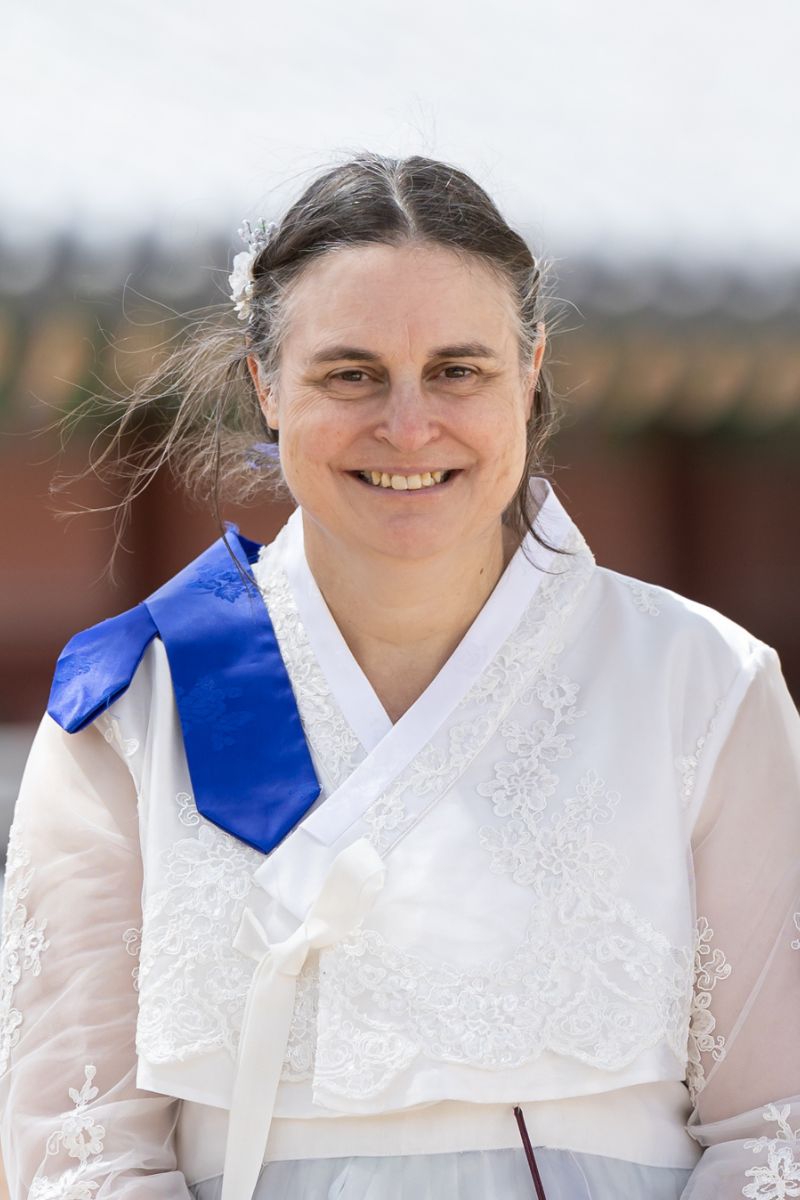When you start planning your visit, a common question where are the best places to visit in South Korea, to enable you to start planning your itinerary. Here are our top picks with an overview of what to do and see in each location.
Our top picks are as follows – learn more about each location further below.
- Seoul
- Nami Island
- DMZ (DeMilitarized Zone)
- Busan
- Jeju Island
- Gyeongju
- Jeonju
- Sokcho
About South Korea
The Republic of Korea has a population of over 50 million people, living on the southern section of the Korean Peninsula. South Korea has a long and ancient history with archeological sites dating back to 30,000 BC to today.
Below is a map showing the best places to visit in Korea.
1. Seoul
Seoul is centrally located in a strategic location on the Korean Peninsula and has a population of over 10 million people.
The kingdoms of Baekje, Goguryeo, Silla and Joseon all fought over the area which is now Seoul. As a result there are many palaces and other historical sights to see in Seoul, along with many much more modern experiences.
Plan to stay for at least 4 days to make the most of your visit, and preferably longer if possible. Popular places for tourists to visit in Seoul include the following options.
- Visiting the five grand palaces of the Joseon period is a must – if you have limited time plan to visit at least 1-2 of them. Gyeongbokgung Palace is the most popular, and make sure you plan your visit to see the changing of the guard ceremony.
- Explore a Hanok Village to see traditional hanok style houses and experience traditional culture.
- Visit Mount Namsan and go to the top of N Seoul Tower.
- Visit part of the ancient Seoul City Wall (Hanyangdoseong) which encircles the city.
- Visit a museum. Options include the National Palace Museum, the Kimchi Museum, the National Folk Museum and many more.
- Visit the markets. There are many different ones to try – our tops picks are Namdaemun Market for knick knacks, Dongdaemun Market for fashion, Gwangjang Market for street food and Noryangjin Market for seafood.
- Visit the theme parks. Lotte World is mostly indoors in central Seoul so the easiest to get to, and you can visit in all seasons. Everland is south of Seoul and takes a longer to get to, but is a great day out. Seoul Land is also a popular smaller theme park option.
- Go shopping. Think Insadong for art galleries, souvenir shopping and more, Dongdaemun, Myeongdong
- Go clubbing. Think Hongdae and Gangnam, and many more options!
- Visit the temples. Jogyesa Temple in Insadong is a great option – the Golden Buddhas are amazing.
Click here to check out our detailed Seoul Travel Guide
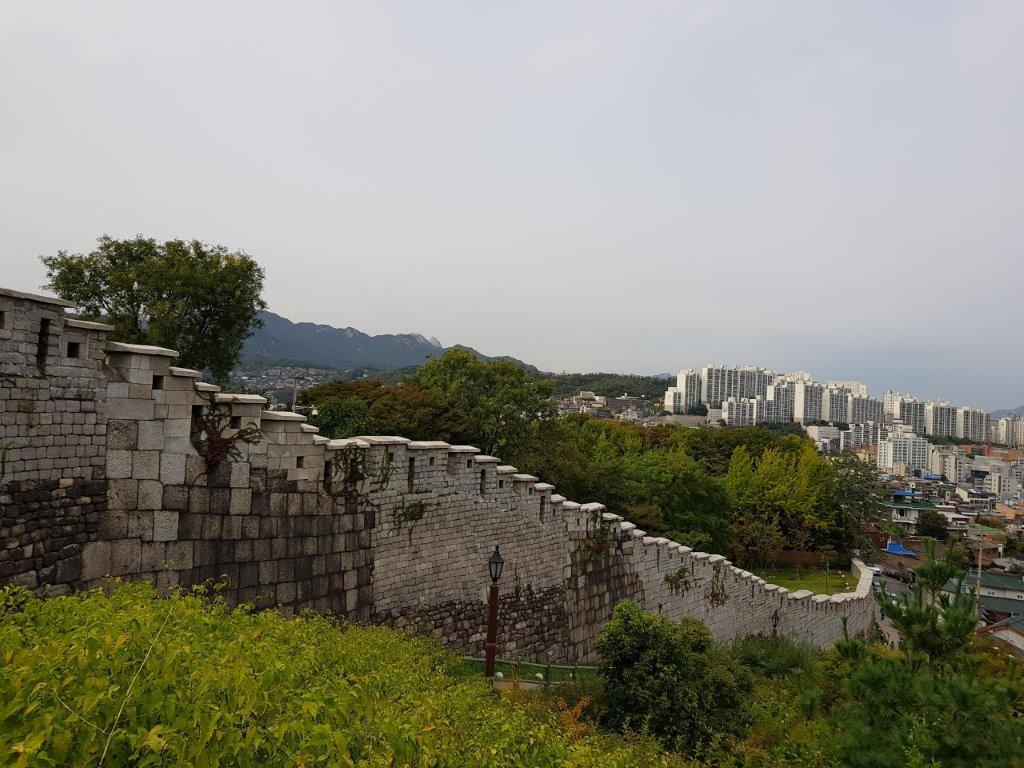
2. Nami Island
Nami Island is a great day trip or day tour to the east of Seoul in Gapyeong. Nami Island sits in the middle of the Han River and was formed when the Cheongpyeong Dam was built in 1944.
Nami Island is quite a large island with an area of approximately 114 acres or 462,000 square meters which is covered with beautiful chestnut and poplar trees and has many art and recreation activities. You can easily spend a half or full day exploring Nami Island. The Zipline over the river to Nami Island is an amazing experience!
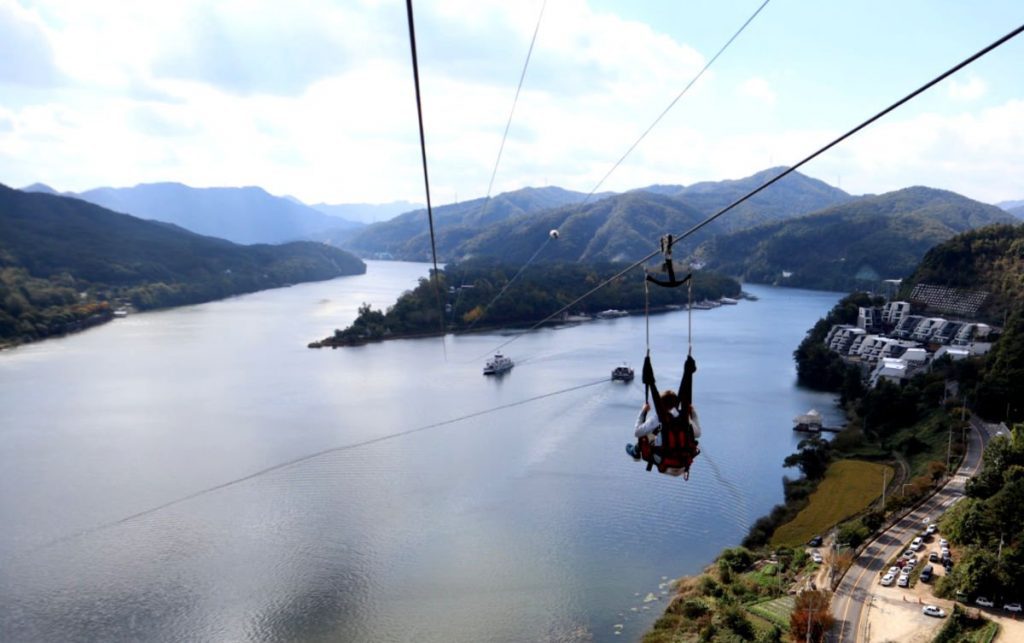
Near Nami Island there are several other wonderful attractions as follows:
- The Garden of Morning Calm is an amazing garden to visit in all four seasons.
- The Gapyeong Rail Bike is a fun experience to pedal on a two or 4 seater kart along a disused rail track. A similar activity is also available at the nearby Gangchon Rail Bike.
- Petite France is a French themed village where you can explore the culture of France and learn more about puppets, as well as seeing a live puppet show.
- Legoland Korea has recently opened and is located near Nami Island.
A popular way to visit these attractions is on a day tour from Seoul, however you can also DIY using public transport options.
Click here to check out our detailed Nami Island and Surrounds Travel Guide
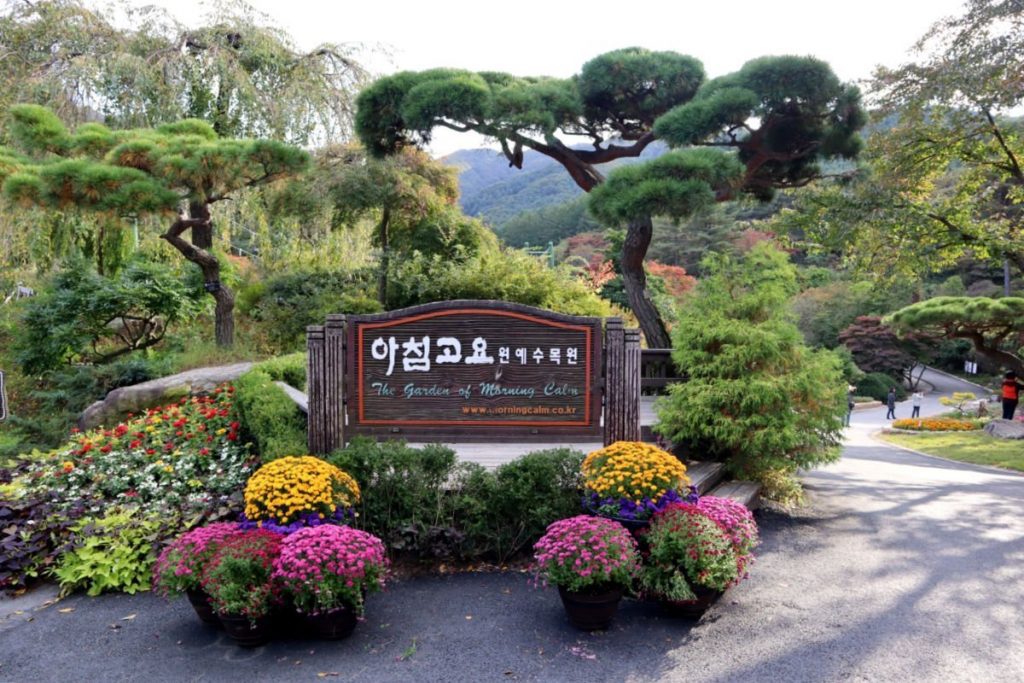
3. DMZ (DeMilitarized Zone)
After the Korean War ended in a truce in 1953, the 4km /2.5 mi wide and 240km / 150 mi long Demilitarized Zone (DMZ) was established as the border between North and South Korea. Panmunjom is a small village located within the DMZ where officials from both countries can meet in the Joint Security Area.
From Seoul there are options to do a half or full day tour to visit the DMZ, including a visit to Freedom Bridge, The 3rd Infiltration Tunnel, the Dora Observatory and Imjingak Park.
Click here to check out our detailed article about how to book a DMZ tour from Seoul
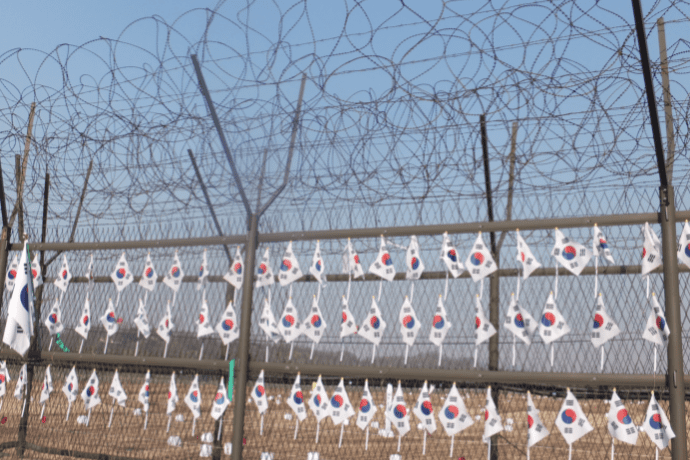
4. Busan
Busan is the second largest city in South Korea, with a population of over 3.5 million people. It is located in the south east of the Korean Peninsula and is a seaside city, with many lovely beaches which are very busy in summer! Busan has a great combination of traditional charm combined with modern experiences.
Plan to stay in Busan for at least 3 days to make the most of your visit, and preferably longer if possible. Busan is easy to get to from Seoul – the fast trains make the journey in only 2.5 hours direct, or using the cheaper bus option it is a 5.5 hour journey. Popular places for tourists to visit in Busan include the following options.
- Explore the Gamcheon Culture Village to see the picturesque multi coloured village which appears to be stacked up the hillside. Enjoy exploring the village (and get lost!) to find local street and public art.
- Visit the Jagalchi Fish Market to see the largest fish market in South Korea. Plan to enjoy fresh seafood in one of the many restaurants in and around the market.
- Visit other markets – including Nampodong Market for souvenirs and vintage clothing, Gukje Market for a large range of household goods, Tin Can Market for food
- Visit neighbouring Haeundae or Gwangalli Beaches, some of South Korea’s most beautiful beaches.
- Visit Haedong Yonggungsa Temple which is located beside Songjeong Beach, to see the amazing views
- Do a coastal waterway walk – the most popular are Taejongdae Resort Park, Oryukdo Skywalk, Songdo Beach and Cheongsapo Daritdol Observatory
- Visit Geumjeong Fortress, using the Geumgang Park Ropeway. There are a great selection of hiking trails to explore the area and get amazing views over Busan.
- Visit the UN Memorial Cemetery to reflect on the Korean War and those who died.
- Visit a Jimjilbang or Korean Spa. Top options in Busan include Spa Land Centum City and Heosimcheong (or Hurshimchung) Spa
Click here to check out our detailed Busan Travel Guide
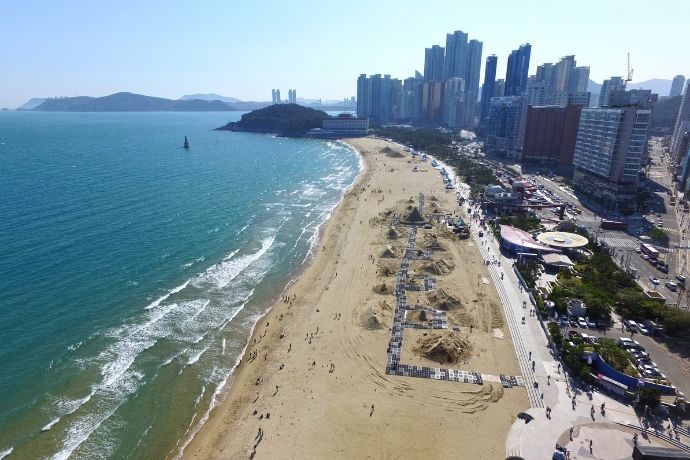
5. Jeju Island
Jeju Island is the largest island in South Korea and is located to the south in the Korean Strait. Jeju Island has an oval shape, and measures 73km / 45 mi west to east and 31 km / 19 mi north to south. Hallasan Mountain is a dormant volcano which sits in the center of the island, and is the tallest mountain on the island. Jeju Island is a very popular tourist destination with its own international airport.
Jeju Island is best known for its natural experiences – the beaches, hiking, waterfalls and more.
Plan to stay on Jeju Island for at least 3 days to make the most of your visit, and preferably longer if possible. Jeju Island is easy to get to from Seoul – regular cheap flights are available and take just over one hour to get there. You can also fly direct to Jeju Island from many other countries and other parts of South Korea! A great option to explore Jeju Island is to book day tours.
Popular places for tourists to visit on Jeju Island include the following options.
- Hike up a volcano! Options include Mt Hallasan (10km return, approximately five hours to the peak at 1950m / 6397 ft) to view the crater lake – or alternatively there are other shorter trails around the side of the mountain, Seongsan Ilchubong (or Sunrise Peak) is a hike or approximately 25 minutes to see the sunrise.
- Visit a waterfall. The most popular waterfalls on Jeju Island include Jeongbang Falls, which flows directly into the sea and Cheonjeyeon Waterfalls
- Visit a beach. Top options include Hyeopjae Beach, Geumneung Beach and Iho Taewoo Beach, also Samyong Beach is a favourite for its glittering black sand.
- Visit a cave. Check out Hallim Park, which has Ssangyonggul Cave and Hyeopjaegul Cave, both lava caves. Also check out Manjang Caves (Manjanggul) to see one of the longest lava caves in the world.
- Visit other natural sights including the hexagonal pillars at Jusangjeolli Cliffs, Udo Island for its beaches, tiny Chagwido Island and Oedolgae Rock.
- Visit quirky museums. Popular options include Jeju Loveland (not for kids – be prepared to be shocked), Jeju Natural Stone Art Museum, Jeju Alive Museum, Moomin Land Jeju, the Jeju Teddy Bear Museum and more.
- Do fun watersports! Including scuba diving, snorkelling, Stand Up Paddle Boarding (SUP), para sailing, jet boating, surfing, kayaking, fishing, sailing and more.
- Hike all (or part of) the 425km / 264 mi long distance Jeju Olle Trail which circumnavigates Jeju Island. The trail is divided into 26 routes, so you can choose to do as much or as little as you like at varying levels of difficulty. There are both guided and independent hiking options.
- Try unique Jeju Island food specialties – such as Jagalchi (grilled or boiled silver scabbard fish), Heuk-dwaeji (Barbequed Black Pork from the local black pigs) and Jeonbokjuk (abalone porridge).
- Visit the local Jeju Island markets – including Dongmun Market for local foods and unique local produce.
- Visit Jeju Folk Museum to learn more about the island’s history and culture.
- View the Jeju Haenyo Women Divers, who gather seafood without diving equipment. They do a twice daily show.

6. Gyeongju
Gyeongju, which is known as ‘the museum without walls’, was the capital city of the ancient Silla Kingdom, which ruled over a large part of the Korean Peninsula for 1000 years, roughly from 57BC to 935AD. As a result there are a large number of historical sights, with many UNESCO World Heritage Sites. Gyeongju is located north of Busan in the south east of South Korea.
Plan to stay in Gyeongju for at least two days to make the most of your visit, and preferably longer if possible. Gyeongju is easy to get to from Seoul – the fast trains make the journey to Singyeongju Station in just over two hours, and from there you can take a bus for 30 minutes to reach the centre of Gyeongju.
There are also many inter city bus options which travel direct to the center of Gyeongju. From Busan it is a bus journey of only one hour, so you could also visit as a day trip or day tour from Busan. Popular places for tourists to visit in Gyeongju include the following options.
- Visit the Daereungwon Tomb Complex in Tumuli Park. There are more than twenty distinctive tomb mounds within the park. The Chunmachong Ancient Tomb is one tomb open for visitors, with replica artefacts on display. Note that you are not allowed to climb the mounds.
- Visit Cheomseongdae Observatory which was built in the mid 600’s. It is the oldest astronomical observatory in east Asia, and is 9m / 30ft tall and 5m / 16ft wide. It is beautiful to view both by day and night.
- Visit Gyochon Traditional Village (Gyeongju Hyanggyo) to get a sense of what it was like to live in Gyeongju during the Silla period, with traditional crafts and foods to experience.
- Visit Donggung Palace & Wolji Pond to appreciate the original magnitude of the main palace complex which was subsequently burnt down and never reconstructed. Wolji Pond (previously known as Anapje Pond) is beautiful both by day and at night when it is illuminated.
- Visit the National Museum of Gyeongju to learn more about the Silla Kingdom.
- Visit Bulguksa Temple, an amazing Buddhist temple which is a UNESCO World Heritage Site.
- Visit the Seokguram Grotto, which is located in the hills behind the Bulguksa Temple to see the seated Buddha inside the cave, which was created in 751 AD.
- Go Hiking in Gyeongju National Park, to see over 100 temples and stone Buddha statues.
- Visit Gyeongju World Amusement Park to have fun on the rides!
- Try the local food specialties, including ssambap (meat, rice, sauces and side dishes which you wrap with green leaves) and Hwangnam bread (a pastry with a red bean paste filling).
- Stay in Golgulsa Temple to experience traditional rituals, meditation and martial arts training.
Click here to check out our detailed article on things to do in Gyeongju
Klook.com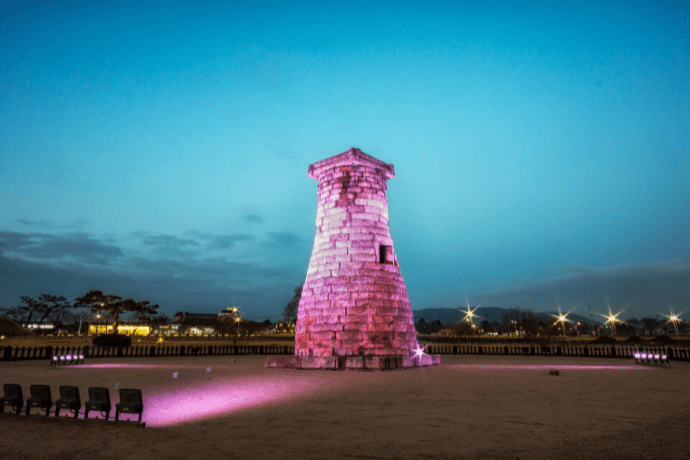
7. Jeonju
If you love food then make sure you plan to visit Jeonju – which was named a UNESCO City of Gastronomy in 2012! In addition, Jeonju has the largest Hanok village in South Korea, with over 600 Hanok houses to stay in and explore.
Plan to stay in Jeonju for at least 2 days to make the most of your visit, and preferably longer if possible. Jeonju is easy to get to from Seoul – the fast trains make the journey directly south in only 1.45 hours. Popular places for tourists to visit in Jeonju include the following options.
- Stay in Jeonju Hanok Village (and explore!). Learn more about what it is like to stay in traditional hanok accommodation and learn more about Korean traditions. Also plan to visit the Hanok Village History Museum, Jeonju Crafts Exhibition Hall and Jeonju Traditional Hanji Center to learn more about traditional Korean culture. Also visit the Omodae Viewpoint to see the view over the Jeonju Hanok Village.
- Dress up in a traditional Hanbok. Jeonju is a great location to wear a traditional hanbok and explore the area.
- Eat the famous food and drinks! Ensure you plan to try Bibimap (rice with meat and vegetables), Choco Pie, Makgeolli (Korean traditional rice wine), traditional Korean tea and more.
- Visit Jaman Mural Village, to explore the street art.
- Visit Gyeonggijeon Shrine, in the centre of the Jeonju Hanok Village along with the Royal Portrait Museum.
- Visit Deokjin Park to view the beautiful lotus flowers.
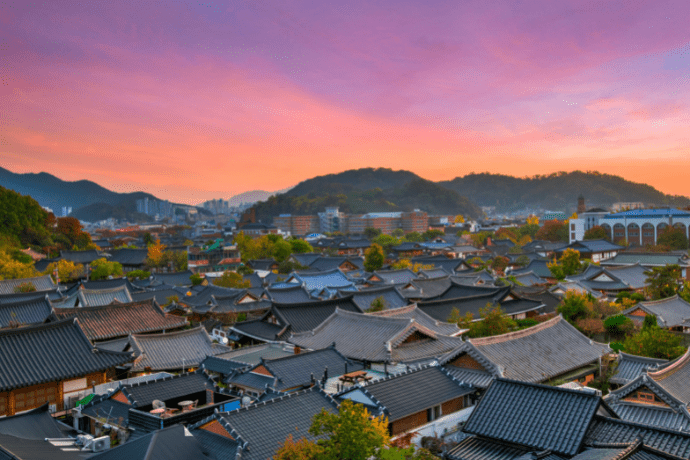
8. Sokcho
Sokcho is a coastal town in north west South Korea which is the gateway to the amazing Seoraksan National Park, and also has many lovely beaches which are very busy in summer!
Plan to stay in Sokcho for at least 2 days to make the most of your visit, and preferably longer if possible. Sokcho is easy to get to from Seoul via a 3 hour bus ride. There are also long day tour options from Seoul. Popular places for tourists to visit in Sokcho include the following options.
- Visit Seoraksan National Park. Get in early to take the Cable Car to ride to the summit, then walk 10 minutes to Gwonggeumseong Fortress to see more amazing views. There are also many shorter and longer hikes you an do if you wish to explore further.
- Visit Sinheungsa Temple in Seoraksan National Park to see the seated bronze Buddha.
- Visit Sokcho Beach to enjoy the white sand beaches.
- Visit Daepo Port Fish Market to experience a typical Korean fish market.
- Visit the Goseong section of the DMZ, which is located on north from Sokcho and can be visited either via self drive or a tour from Sokcho.
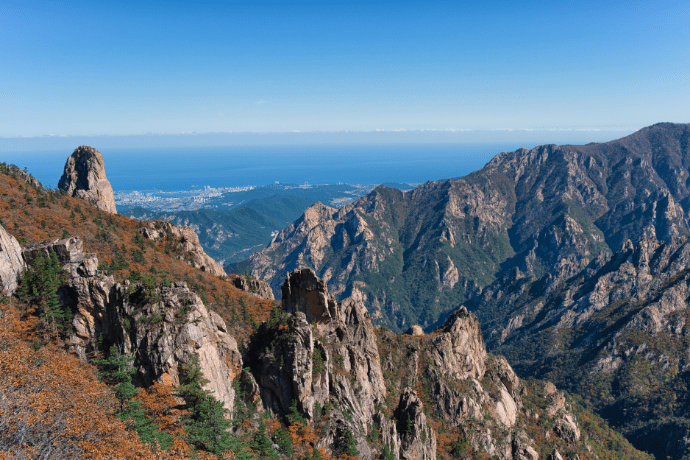

Join the South Korea Travel Planning Facebook Group
You are also welcome to join our South Korea Travel Planning Facebook Group – it is a great resource to enable you to ask questions about your upcoming trip to South Korea!
Disclaimer: This article contains affiliate links. If you book after clicking on one of these links then we may receive a small commission at no extra cost to you.
Anne Sutherland-Smith is a seasoned travel writer and a passionate explorer of South Korea’s vibrant culture, history, and landscapes. With decades of travel experience, Anne deeply understands what makes Korea a unique and captivating destination for travelers worldwide. As the lead author for koreatravelplanning.com, Anne’s work is based on thorough research and firsthand experiences. Her insights are regularly sought after in the travel community, and she has been featured in various travel forums and publications. Her expertise extends to Korean destinations, transportation, cuisine and the latest trends in Seoul’s bustling city life.
Dedicated to providing reliable and practical travel advice, Anne ensures that every piece of content on koreatravelplanning.com is accurate, up-to-date, and useful for travelers at every stage of their journey. Her commitment to authenticity and her personal experiences traveling across Korea make her a trusted voice in the travel community.
Follow Anne’s adventures and get valuable Korea travel tips on koreatravelplanning.com and through her social media channels. Whether you’re planning your first trip to Korea or looking to explore deeper, Anne’s insights will be your invaluable guide.


